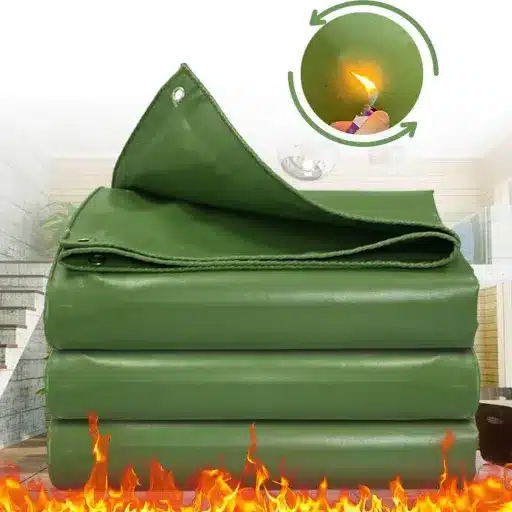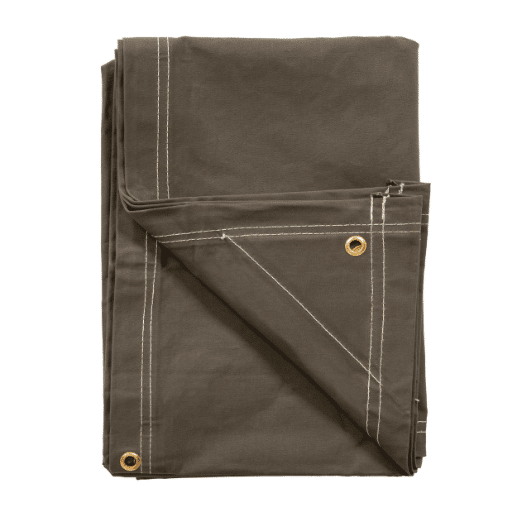This is one product that fits the categories of all kinds of industries when it comes to protecting valuable equipment, job sites, or structures from the risks of fire. These are heavy-duty tarps, specially treated to prevent them from catching fire and make the existing fire spread slowly. They have, thus, become crucial in ensuring safety and in regulatory measures towards fire safety. This article takes you through the unique properties, uses, and advantages of fire retardant tarps, offering a complete guide to their applications in any heavy industry. Whether you find yourself amidst construction-site hazards, industrial operations, or emergency protection, it would pay off to know the value of these protective materials. Carry on reading to find out how fire retardant tarps provide unparalleled peace of mind while elevating safety standards in demanding conditions.
Understanding Fire Retardant Tarps
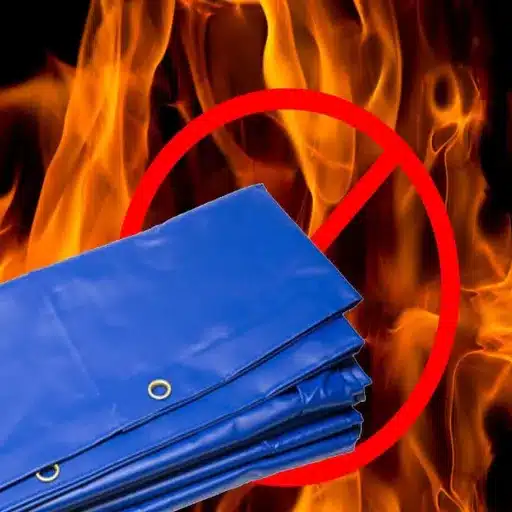
What are Fire Resistant Tarps?
These fire retardant tarps serve as specialized protective coverings for resisting ignition and causing a delay in the spread of fire; thereby they become important in scenarios subjected to hazardous fire situations. Using advanced materials like a fabric of polyvinyl chloride (PVC), polyethylene, or a canvas treated with chemicals for fire resistance, these tarps abide by strict safety standards like NFPA 701 or California State Fire Marshal’s standards. They are designed to make the particular surface against magified sparks, flames, and heat somewhat less flammable. They are all over the place and serve reduced fire hazards in construction, transportation, industrial settings, and even events of some sort. Acting as barriers for potential ignition sources, they protect properties as well as equipment, and make work safer for personnel involved in hazardous conditions.
How are Fire Retardant Tarps Working?
The fabric list and the chemical composition are incorporated under fire retardant tarps to inhibit combustion and further decrease the speed with which flames spread under conditions of flaming heat and artificial ignition. These tarpaulins are usually made of synthetic polymers that are naturally flame-retardant or natural fibers enhanced with chemicals to provide fire-retardant properties. This treatment forms a layer that, under heat, will either liberate non-combustible gases or produce a char layer that limits oxygen, hence impeding combustion and ignition of the organic matrix.
Fire Retardant Mechanism:
- Releases non-combustible gases under heat
- Produces char layer that limits oxygen supply
- Impedes combustion and ignition process
- Uses halogen-free compounds (modern tarps)
- Employs environmentally friendly coatings
The advances that have followed up-to-date data have halogen-free kind of compounds and environmentally friendly coatings for modern fire retardant tarps relative to global safety and environmental concerns. These developments enable the tarps to function optimally when exposed to extreme temperatures, at the same time minimizing the formation of toxic by-products during combustion. This special engineering turns them into great assets of the industry where flame resistance is an absolute stipulation, especially in welding operations, transportation of flammable materials, and in construction operations adhering to intense fire safety requirements.
Advantages of Fire Retardant Tarps
Fire retardant tarps offer a myriad of benefits addressing safety and operational issues of most industrial and commercial applications. The latest data suggest that such tarps provide the ultimate solution to stagger the possibilities of fire-related accidents by acting as a barrier to either slow or supress the spread of fire. They are, therefore, vital in scenarios liable to industrial hazards or temperature extremes. Furthermore, fire retardant tarps resist prolonged exposure to harsh climatic conditions, thus improving their strength and life span compared to ordinary tarps.
Safety Enhancement
Reduces fire-related accidents by slowing or suppressing fire spread
Cost Efficiency
Minimizes losses and downtime caused by fire damages
Regulatory Compliance
Ensures adherence to fire safety laws and avoids compensation claims
Enhanced Durability
Resists harsh climatic conditions better than ordinary tarps
Besides being a safety measure, these tarps are also cost-efficient because they minimize losses and downtime caused by fire damages. They also, simultaneously, ensure that industries such as transport and construction which demand stringent adherence to fire safety laws maintain compliance and thus avoid huge compensation claims. Going for these highly engineered tarps marks a stand that goes much beyond; what it means to practically safeguard the workforce, assets, and the environment.
Types of Fire Retardant Tarps
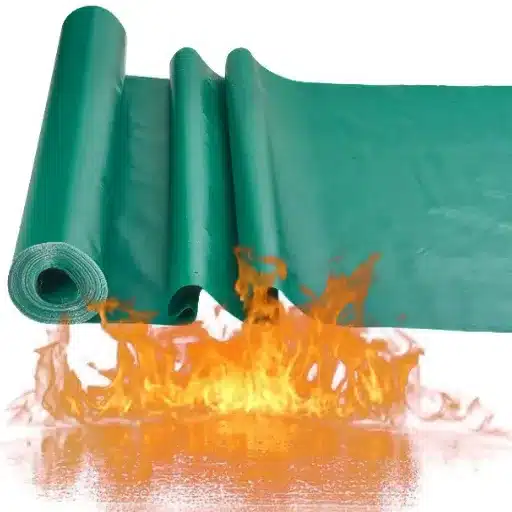
Poly Tarps vs. Vinyl Tarps
Poly tarps and vinyl tarps represent two entirely different types of fire-retardant tarps, as their performance requirements and typical use considerations vary. Poly tarps are made from polyethylene, a lightweight plastic polymer, hence inexpensive and versatile in use. A typical set of these tarps consists of multiple layers on polyethylene sheets and varnished over for water and UV resistance. While fire retardance in poly tarps is enough for most general-use applications, such tarps are actually temporary and short-term solutions given their lower durability as opposed to vinyl tarps.
Vinyl tarps are made of polyvinyl chloride and reinforced with polyester scrims to give added strength and reliability. They can withstand developments with high resistance to abrasion, chemical attack, and very high or low-temperature extremes. Due to their durability, enhanced fire resistance, and adherence to stringent safety standards, vinyl tarps find their greatest application within the industrial, construction, and transportation sectors.
From the most recent search engine data, one can discern that there are growing queries about fire-retardant vinyl tarps for harsh processes where long-term use and full performance are ensured. Conversely, poly tarps retain their popularity for better fend-off for short terms. Thus, job-specific parameters should dictate the choice of poly or vinyl tarps, which include the price, exposure to environmental conditions, and regulatory requirements.
Heavy Duty Fire Retardant Tarps
In solid heavy-duty fire-retardant tarps, however, selection must be made upon the needs of a particular project and current industry trends. In recent times, the surge in demand for these tarps is driven primarily by their use in industrial and commercial setups where both durability and stringent fire safety regulations are non-negotiable. Fire-retardant vinyl tarps are desired in instances where there is a need for relatively high tensile strength, long-term resistance to UV rays, and adherence to the strictest fire safety codes, such as NFPA 701 or CPAI-84. These are an ideal choice for use with temporary construction enclosures, equipment covers, or in an agricultural setting where extended performance is required from fire-retardant tarps. Whether or not to use heavy-duty fire-retardant tarps must ultimately be decided upon by the particular use case, code considerations, and environmental conditions of the deployment.
Key Safety Standards:
- NFPA 701: National Fire Protection Association standard for fire resistance
- CPAI-84: Canvas Products Association International specification
- California State Fire Marshal: State-specific fire safety standards
Lightweight vs. Heavyweight Options
While weighing the options of lightweight versus heavyweight tarps, the best option is determined by intended use, the durability of material required, and the ease of handling. Lightweight tarps generally have thinner polyethylene or are made of light-weight fabric that is thus very portable and easier for one or two people to maneuver, making it best for those temporary uses such as temporary covers or surface covers for events. On the other hand, heavyweight tarps are generally made of thick poly coating or heavy-duty vinyl to see weight in resistance against abrasion, puncture, and other environmental stresses arising from wind or heavy snow loads, on the other hand, would offer long-term exposure in demanding types of weather.
In according to current search trends, “lightweight tarps for camping” maintain higher activity than “heavy-duty tarps for industrial use,” suggesting growing consumer interest in portable and versatile solutions for recreation. Meanwhile, searches for the term “fire-retardant heavy tarps” show that the industrial sphere is alive, emphasizing the need for advanced protective features being tested and implemented in high-end project environments. When deciding between the two, start by considering actual needs, including exposure to the sun, resistance to tearing, and flame retardancy.
Applications of Fire Retardant Tarps
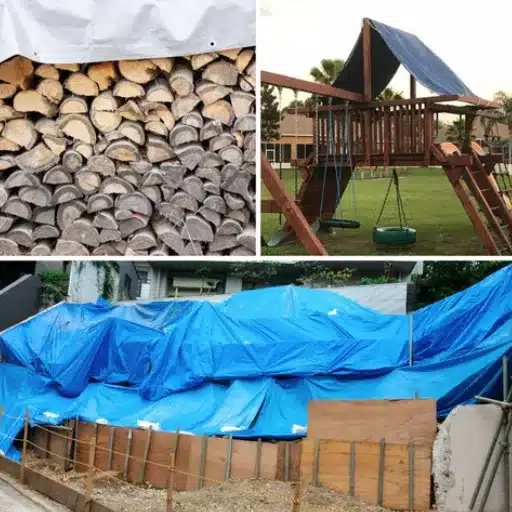
Construction Sites
Fire-retardant tarps are essential for construction sites because of the very real threat of potential fire hazards in such environments. The latest search trends point out a conspicuous rise in demand for tarps that dry-clean go hand in hand with both fire resistance and durability, hinting at enhanced consciousness regarding safety regulations and compliance standards within industry operations. In the larger picture, these tarps help protect building materials from potential heat sources, contain debris, and act as ignition-resistant temporary enclosures. For production managers, the choice of a fire-retardant tarp has to take into consideration the possible high tear pressures that might rise to project safety requirements, UV stability, and NFPA 701 standards. The increased public search trend again confirms the need for site-specific approaches that emphasize operational efficiency on the one hand, and equally uphold strict safety measures.
Construction Site Benefits:
- Protects building materials from heat sources
- Contains debris and prevents spread
- Acts as ignition-resistant temporary enclosures
- Meets NFPA 701 standards
- Provides UV stability for long-term use
Outdoor Events and Camping
According to its recent search trends, the popularity of outdoor events and camping has been greatly emphasized in recent times. We are often asked, “What are the essential considerations for safe and sustainable camping?” Taking a closer look at the data, it appears to focus on durable and weather-resistant gear, usage of Leave No Trace to minimize environmental impact, and above all fire safety concerns. Contemporary camping gear such as fire-retardant tarps, tents with UV resistance, and biodegradable materials are in fact an answer to the ever-growing demand from customers for their safety and environmental compatibility. The data has also shown that there is an increased interest landscape ripe for portable power solutions and renewable energy, including solar-powered generation, where ecological comfort is an equal priority.
Durable Gear
Weather-resistant equipment for outdoor use
Fire Safety
Fire-retardant tarps and safety measures
Eco-Friendly
Leave No Trace and biodegradable materials
Fire Safety in Residential Areas
Fire safety in residential areas remains a concern, especially as urban populations swell and density increases. Recent data from the search engine trends at has observed an exponential rise in searches on fire prevention technologies, including smart smoke detectors, fire-resistant building materials, and automated sprinkler systems-a clear indication of rapid public interest in integrating advanced safety measures into residential spaces.
What are the best methods to improve fire safety at home?
One of the most commonly asked questions that the data has brought to light is, “What are the best methods to improve fire safety at home?” The most authoritative answer should be a multilayer solution: interconnected smoke alarms installed on every level of the home, fire extinguishers stored in accessible areas such as kitchens, and flame-retardant furniture. Additionally, the process of creating and practicing an escape route for all members of the household on a regular basis will keep everyone prepared for a fire emergency.
Multilayer Fire Safety Approach:
- Interconnected smoke alarms on every level
- Fire extinguishers in accessible areas
- Flame-retardant furniture and materials
- Regular escape route practice with all household members
- Professional electrical wiring inspections
- Use of surge protectors
Other data show an upward search interest in preventing electrical fires, emphasizing the need for wiring to be inspected by certified professionals and the use of surge protectors. The synergy of traditional fire prevention techniques and smart-age technology can provide homeowners with a solution toward mitigating fire risks while enjoying convenience and the rewards of innovation.
Choosing the Right Fire Retardant Tarp
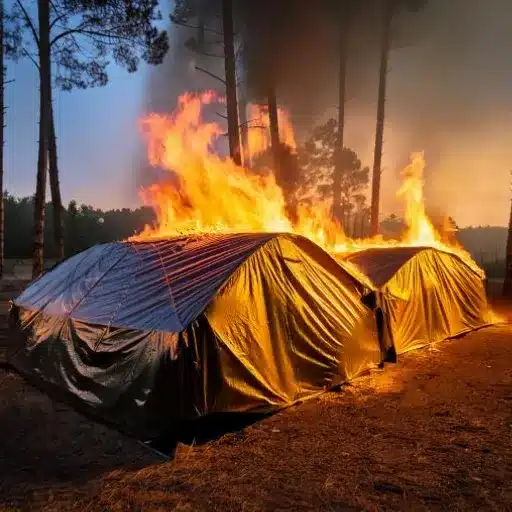
Key Features to Consider
A number of important criteria must be evaluated while choosing a fire retardant tarp to certify safety, durability, and conformance to industry standards. First and foremost, the fire program stipulates that the tarp must possess fire resistance certification, such as NFPA 701 or CPAI-84, depending on the specification. The tarp’s material is a very important consideration, be it PVC-coated polyester for strength and flame-retardant properties. Thickness, depending on the GSM rating, is also an important consideration, with the higher GSM indicating good durability against wear-and-tear under extremely tough conditions. Other considerations include the following: UV resistant for long-term outdoor exposure; waterproof so as to keep moisture out; and grommet reinforced so it can besurely installed.
Essential Features Checklist:
- Fire Resistance Certification: NFPA 701 or CPAI-84 compliance
- Material Quality: PVC-coated polyester for strength
- Thickness (GSM): Higher GSM for extreme conditions
- UV Resistance: Long-term outdoor exposure protection
- Waterproofing: Moisture barrier capability
- Reinforced Grommets: Secure installation points
There’s this surge in demand for reliable fire retardant tarps, evidenced by interest in fire safety technologies highlighted by the latest data from ‘s search engine. This can be taken as evidence that when deciding to enhance safety either at home or for commercial purposes, features such as certification, fabric quality, and functionality should be given utmost consideration.
Certifications and Standards
In a way, certification and standards are the guarantee of quality and safety within the realm of fire retardant tarps. Standards such as the National Fire Protection Association NFPA 701, and the CPAI-84, that is specific concerning fire resistance of fabric materials, are some of those recognized in our industry and used clamp down on inferior products. With this issue exacerbated by the fact that the latest data from the search engine of show a sudden increase in user interest with safety technologies, responsiveness to such standards appears worthy even more. Meeting or exceeding such certifications, therefore, offers the user assurance but also acts as proof that such a manufacturer intended to provide them with a reliable product that conforms to prevailing regulations. From the consumer’s perspective, giving rising tarps certified priority leads to the highest safety and performance standards achievable in both residential and commercial environments.
Size and Finished Size Options
It is crucial for any purchaser of tarps to distinguish between the cut size and the finished size to ensure that the dimensions fit the intended application. The cut size is the initial measurement of the tarp before hems and seams are applied. The finished size does take into account hemming and seaming, which usually reduces the tarp sizes by four to six inches on each side. Consumer data now indicate that sizes such as 10 by 12 feet, and 20 by 30 feet, are the most commonly searched for, thus reflecting the demand toward a tarp that could suit both personal and commercial needs. On this basis, consumers who consider the finished size for the purchase will be assured that the tarp meets dimensional criteria without compromising coverage or usability.
Understanding Tarp Sizing:
- Cut Size: Initial measurement before hems and seams
- Finished Size: Final dimensions after hemming/seaming
- Size Reduction: Typically 4-6 inches on each side
- Popular Sizes: 10×12 feet, 20×30 feet
Maintenance and Care for Fire Retardant Tarps
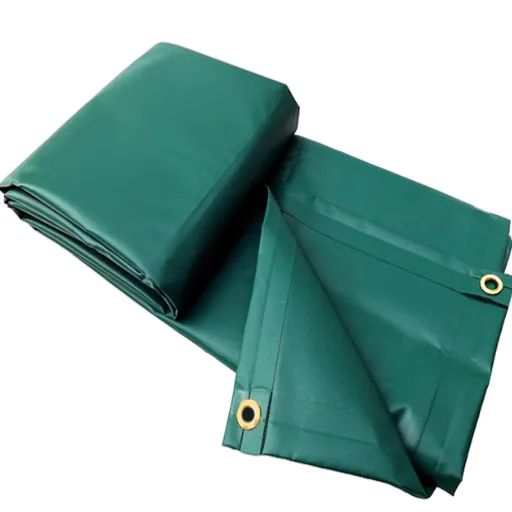
Cleaning and Storage Tips
To maximize the lifespan and protection offered by fire retardant tarps, they must be cleaned and stored properly. The search data from ‘ indicates that possible queries may include how to provide for tarps to maintain their protective value. Cleaning should involve mild soap and lukewarm water to gently wash away dirt or debris, thereby preventing damage to the fire retardant coating. Do not use harsh chemical cleaners or abrasive tools, as these will simply ruin the tarp’s special material. After cleaning, it is necessary to let the tarp dry in the air so as to avoid forming mold or mildew.
Cleaning Best Practices
- Use mild soap and lukewarm water
- Avoid harsh chemical cleaners
- Don’t use abrasive tools
- Air dry completely
- Prevent mold and mildew formation
Storage Guidelines
- Fold neatly after complete drying
- Store in dry, cool location
- Keep away from direct sunlight
- Use protective storage bag/container
- Protect from environmental assaults
In storing, the tarp should be folded neatly and stored in a dry and cool place away from direct sunlight; UV rays slowly weaken the tarp material. Placing the tarp into a protective storage bag or container further serves to prolong its life by sheltering it from environmental assaults and physical harm. Sticking to these special cleaning and storage methods will allow users to get the most out of their tarp while giving it its longevity, all the while maintaining its standards of safety.
Signs of Wear and Tear
To properly identify wear and tear in their tarps, users should perform routine visual inspections on key stress points such as grommets, seams, and reinforced edges. Signs of fraying, discoloration, thinning of materials, or tiny punctures should alert one to possible material deterioration. Prolonged ultraviolet radiation exposures, moisture buildup, or mechanical abrasion are among the common factors that directly cause such deterioration.
Warning Signs to Watch For:
Visual Damage
Fraying, discoloration, thinning
Physical Damage
Tiny punctures, tears
UV Damage
Material brittleness, fading
Hardware Issues
Failing grommets, seam damage
One of the greatest queries from users, based on recent search engine data of ‘is concerned about the longevity of tarps. Preventive measures, such as applying UV inhibitors, treating small tears immediately with repair tape, and storing properly, will reduce wear and tear. In addition, replacing faulty grommets or re-sealing seams with waterproof adhesive will further extend the life of the tarp. Regular inspections, combined with maintenance, allow for long-term functionality and compliance in terms of safety.
When to Replace Your Tarp
While maintenance matters, timely replacement of a tarp should be considered in the interest of safety and operational efficiency. Among the commonly cited indicators, according to user trends and search data compilation, for replacement are visible signs of wear, incubation of fraying, and repeated tearing in spite of repairs, severe UV damage, discoloration, or brittleness. A replacement is also advised by the deterioration of waterproofing, witnessed either in frequent leaks during rain or in an inability to repel moisture in adverse weather. A considerable number of search entries on tarp replacement underscore the time-related causes such as loss of structural integrity in high-stress applications or failing grommets that thwart secure installations. Careful surveillance and evaluation of these factors during normal routine inspection avoid hazardous conditions and ensure operational reliability.
Critical Replacement Indicators:
- Visible wear, fraying, and repeated tearing despite repairs
- Severe UV damage, discoloration, or material brittleness
- Deterioration of waterproofing (frequent leaks)
- Inability to repel moisture in adverse weather
- Loss of structural integrity in high-stress applications
- Failing grommets that prevent secure installation
Frequently Asked Questions (FAQs)
What are fire retardant tarps and how do they work?
Fire retardant tarps are specially treated tarpaulins that resist ignition and slow the spread of flames. Such tarps may be constructed using polyethylene or vinyl materials that can be treated for compliance with fire marshal regulations. Being self-extinguishing, fire retardant tarps will cease to burn should the flame source be removed. This makes them good for outdoor use such as covering an open fire pit or grill area where sparks may occasionally occur. Fire retardant tarps also serve as another layer of protection against heat and flames during outdoor operations.
Do fire retardant tarps keep water out?
Most fire retardant tarps are waterproof as well, so they serve two purposes. These tarps are usually made from durable materials such as heavy-duty vinyl or polyethylene, both of which resist fire and water. Fire retardant poly tarps are a solid option for the outdoors, where they will keep your devices and supplies dry from potential harm by flames. When buying a tarp, charges of watermark ratings should be checked; some are rated higher than others. Features such as reinforced edges and aluminum grommets are very respected in all conditions.
What is good care for my fire retardant tarp?
Caring for your fire retardant tarp involves regular maintenance along with proper storage so as to remain useful for a very long time. Clean the tarp only with mild soap and water to avoid harsh chemicals that might harm the tarp’s fire-resistant treatment. After cleaning, dry the tarp thoroughly before folding it for storage, to prevent mold and mildew. Store the tarp in a cool, dry place, avoiding direct exposure to sunlight to maintain its UV resistant properties. Alongside this, inspect the tarp from time to time for any sign of wear and tear so as to consider repair in time that it would still be used to perform its purpose.
Can fire retardant tarps be used indoors?
Yes; fire retardant tarps can be used indoors especially in situations where safety against fire is in consideration. For example, it may be used as a barrier around a campfire or grill to prevent certain accidental fires from spreading. Indoor use might also involve employing such tarps to cover wood or furniture during renovations or other projects that may involve sparks. Always verify that the tarp in question meets the applicable standards with respect to safety from fire and that it is suitable for that indoor use. Tarps that are treated to be slow burning and self-extinguishing will even further enhance safe practices around them inside.
What sizes do fire retardant tarps come in?
Fire retardant tarps come in many sizes designed to fit certain needs. Most common tarps are x 10, x 12, and x 20, with some custom-made for certain applications. Depending on application types like camping or other outdoor events, your bigger tarp can be suitable for covering larger areas. Heavy-duty tarps are normally prepared with a thicker material format, mostly 20 mil or 12 mil, giving heavier muscle for durability and fire resistance. Always buy the size that fits your need for tarpping, ensuring there is an adequate cover from fire hazards.
Reference Sources
Tarps Play Important Role in Protecting Workers, Hospital Construction Site
This article from Loma Linda University highlights the use of fire-retardant tarps in construction to protect workers and prevent environmental hazards.
Discovering the Best Truck Tarpaulin Options
Butler University provides insights into the qualities of high-quality tarps, including flame retardancy and durability.
Hot Work Permit Request – Fire and Life Safety
North Carolina State University discusses the use of fire-retardant tarps for protecting combustible surfaces during hot work activities.

